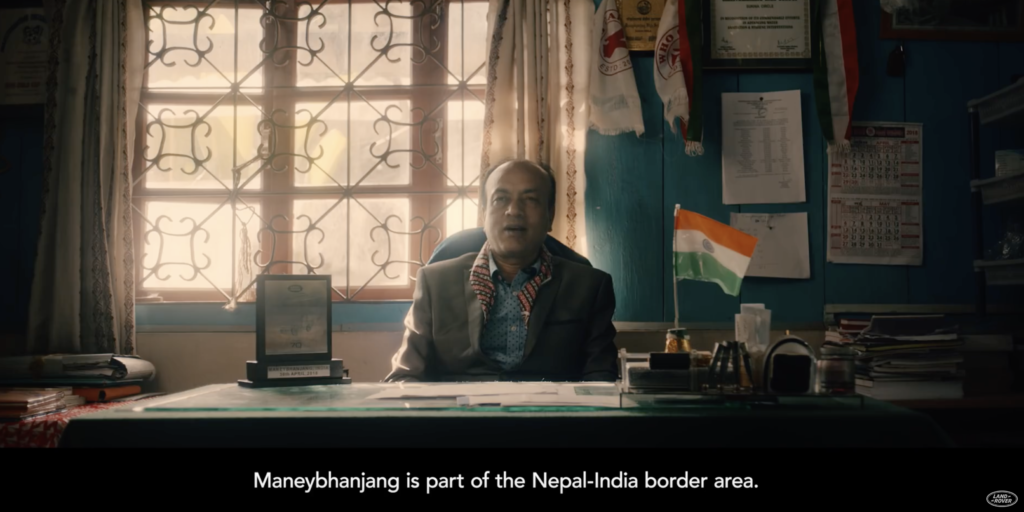
We have been sharing stories from the beginning of human civilization — for good reason. Stories captivate our attention and build communities by bringing ideas, emotions, and experiences to life in a memorable way. So much so, that companies are increasingly embracing brand storytelling in the era of the connected digital consumer.
What is Brand Storytelling?
Brand storytelling is defined as the art of shaping a company’s identity through the use of narratives and storytelling techniques that facilitate an emotional response and establish meaningful connections.
When done correctly, research shows the powerful impact storytelling can have on us:
As a result, in a time when captivating consumer attention is the ultimate commodity, it has never been more important for companies to tell the right stories. The stories that stop us in our tracks, the stories that move us to tears, the stories that challenge us and change our perspective.
In a time when captivating consumer attention is the ultimate commodity, it has never been more important for companies to tell the right stories. Click To Tweet
There’s a magical spark that happens when consumers truly connect with a brand’s story, but how do companies source those unicorn, one-of-a-kind stories? Inspired by our book, The Laws of Brand Storytelling, here are three brilliant examples of brand storytelling you may have missed.
Brand Storytelling Example 1: The Land Of Land Rovers Campaign
Land Rover Showcases Why The Best Stories Come From Others

In celebration of Land Rover’s 70th anniversary, the company brought to life the true story of, “The Land of Land Rovers,” a remote area in the Indian Himalayas. The video tells the story of the local drivers who rely on a fleet of meticulously maintained 1957 Land Rover vehicles to provide transport and supplies along the treacherous mountain roads between two small villages, Maneybhanjang and Sandakphu.
To bring this remarkable story to life, Land Rover’s team made the village of Maneybhanjang their home for ten days in order to get to know these brave drivers and experience their everyday life. The end result delights the viewer with its stunning cinematography, while hearing from the drivers and villagers only further reinforces the incredible off-road capabilities of Land Rover vehicles.
The Best Stories Are Not Your Own
Land Rover’s campaign offers a brilliant example and a reminder that the best stories are not your own, but those of your customers and your fans. Sourcing those stories might be tough, but when you find those that truly touch people’s hearts, invest in bringing them to life and prioritize them over your product message.
The best stories are not your own, but those of your customers and your fans. Click To Tweet
Your Action Item: Get to Know Your Customers
To uncover the best customer stories, our best tip is to invest in getting to know your customers. From asking for customers to share their stories and memories with your company or products through social media or email campaigns, to running contests to encourage stories, top companies create a culture of sharing and storytelling.
Additionally, look at the many customer-facing touchpoints in your business, from sales to customer care, public relations, retail employees, and more. Employees on the front lines always have the best stories, but don’t necessarily know who to share them with. Whether it’s through regular check-ins, internal contests or targeted employee communications in newsletters or in the employee break room in-store, create processes for employees to share.
Brand Storytelling Example #2: Ikea’s Improve Your Private Life Campaign
IKEA Singapore Highlights The Power Of Humor In Storytelling

Every company speaks to the value of their products and services, but how many successfully turn those products or services into a laugh-out-loud funny yet relatable story? Consider taking a page from IKEA Singapore’s Shelf Help Guru campaign. The video campaign stars Fille Güte, a ‘Shelf Help Guru,’ who wants to take IKEA customers on a journey of ‘shelf discovery’ to improve their private lives in their most private areas: their bedrooms and bathrooms.
What makes the video shine is how it uses cheeky scenarios and hilarious puns to illustrate practical storage and furniture solutions from IKEA. The use of humor is spot on, truly captivating the viewer while positioning IKEA as the go-to retail store for improving your home.
However, what’s also exciting about this example of brand storytelling from IKEA Singapore is how the company continued the storyline with its customers on Facebook with a Shelf Help Guru Contest. In the contest, IKEA Singapore challenged fans to ask its Shelf Help Guru a question on how to improve their bedroom or bathroom for a chance to win a $50 gift card. Although a seemingly simple idea, IKEA Singapore had its Shelf Help Guru personally respond to every comment with a funny meme answering the person’s question with a link to the relevant IKEA product page.
Don’t Be Afriad to Get Personal with Your Customers
IKEA Singapore’s campaign speaks the fact that companies shouldn’t be afraid to get personal with their customers, even if it means poking a little fun at yourself. While humor can be hard to master, our best tip is to flex your funny bone aligned with your brand voice and values. Humor should be an extension of your brand voice and incorporated into your wider marketing and storytelling strategy. The brands with the best and most authentic tone of voice, in addition to the most humorous brands, are the ones that deeply know who they are and what makes them special. These brands also deeply understand how their customers perceive them, plus their needs, wants and wishes. The ‘secret sauce’ comes from translating these insights, values and key differentiators into a clever communications style that banishes boring in favor of personality.
Additionally, IKEA’s campaign showcases how succeeding in today’s digital age calls for more than just campaigns but for creating positive experiences for your customers.
Your Action Item: Connect with Your Customer-Service Facing Employees so They Understand Key Messages to Communicate
An actionable tip is to connect with your customer-facing employees, such as community managers and customer service reps. These folks are on the front lines of speaking and interacting with customers each and every day. This campaign is a good reminder of just how valuable their efforts are in further driving engagement around your brand storytelling efforts.
It’s one thing to tell an incredible story, but the reality is that the story is just the beginning. For example, when we tell stories to our friends and family, it sparks a reaction and a conversation among the storyteller and the recipient. Why wouldn’t we want the same as companies? As you develop your brand stories, make sure to factor in engagement activities to further amplify and activate your community around them. Make sure your customer-facing employees know the “back story,” from the inspiration, key messages and why the story matters so they are empowered to continue the conversation.
Brand Storytelling Example #3: Sanlam Bank’s #OneRandMan Campaign
Sanlam Bank Showcases How Storytelling Can Spark Change

Not to be outdone by their consumer counterparts, the financial services industry can still be put human reality at the heart of their stories. The following example from Sanlam Bank may not be a tearjerker, but it firmly establishes itself as an example of storytelling that helps people live better lives.
In South Africa, research shows that most people do not save much of their salary. So much so, that household debt averages about 75% of their after-tax income. To educate South Africans about the importance of saving money, Sanlam Bank launched a 5-part web series called One Rand Man, featuring a young professional who embarks on a social experiment – getting paid only in one rand coins. For context, one rand coin is about seven cents in U.S. currency. The video series documents his trials and tribulations of paying for everyday expenses in coins. Each week, Sanlam Bank also joined forces with respected local personal finance news outlets to share advice and tips based on the issues faced by the One Rand Man.
The Results
Telling the story of One Rand Man, combined with valuable personal finance thought leadership, sparked a chord in South Africans. The video series was watched over 900,000 times, making it the most-watched ad on YouTube in South Africa during the time of the campaign. Furthermore, the effort generated over 74 million media impressions, earning over 41 million rand worth of media exposure for the company (approx $2.8M U.S. dollars). The wild success of One Rand Man spawned One Rand Family and other similar episodic spin-offs, further inspiring and educating South Africans around the importance of personal finance and saving money.
Whether you’re trying to spark change or prove to a customer why your products or services are a good fit for them, seek out stories that are either true or highly relatable.
To connect with your audience, seek out stories that are either true or highly relatable. Click To Tweet
Even though One Rand Man wasn’t a true story, seeing how a big pile of one rand coins quickly was spent in a month was highly visual and allowed South Africans to empathize with expenses in their everyday lives. Comical scenarios like trying to pay for bills in hundreds of coins kept the content interesting, while using the storyline to feed into expert advice and tips added credibility. It also showcases the power of brand storytelling, combined with personalized content and thought leadership, can drive web traffic, sales, demo requests, and more.
Your Action Item: Leverage Visual Storytelling to Bring Your Stories to Life
An actionable tip for businesses is to leverage visual storytelling to bring your stories to life. As humans, we are wired to process visual information more efficiently, so much so that it makes our stories more memorable:
In order for companies to cut through the clutter, focus on how your visuals can support or take the lead in your storytelling efforts. Whether it’s a blog post with supporting visuals or an inspirational video, the more companies can ensure consistency of message in every element of their storytelling efforts, the more they will connect with their audiences.
Are you ready to tell your brand’s story?
Ekaterina Walter and Jessica Gioglio are the co-authors of The Laws of Brand Storytelling: Win―and Keep―Your Customers’ Hearts and Minds (Nov. 2018).